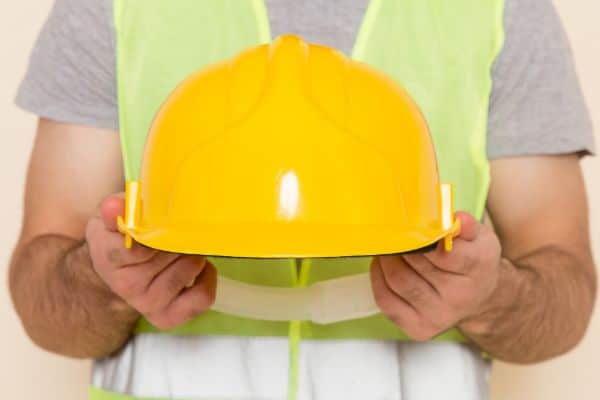The tasks and duties of any HR department are varied and numerous. What one company delegates to the HR team may differ from another. So, is creating a safety culture the responsibility of HR? We think it is.
To highlight this, we’ve examined 8 important roles your team plays in creating a safety culture in the workplace.
Read through these guidelines below, and compare them to your own handling of safety and security at your organization.

Image by KamranAydinov on Freepik
Recruitment and Selection
Your HR recruiting teams have a set of criteria that they follow when identifying potential candidates for top positions. Are they also screening applicants for possible safety concerns?
A quick look at the statistics for workplace shootings in the period 1982-2023 shows that it’s never a good idea to be unprepared.
- HR teams should include safety expectations in job descriptions.
- They should check with previous employers regarding the candidates’ attitudes toward safety.
- Recruit staff with psychological factors in mind and implement psych evaluations where you feel they are warranted.
- Asking behavioral questions during interviews will give HR recruiters a view of candidates’ attitudes and pro-activeness towards workplace safety.
- Always stress the importance of thorough background and reference checks when training your HR recruiting team.
Risk Assessment and Management
Risk assessment is incredibly important, especially if you consider the recent workplace injury statistics.
But every workplace is unique, no matter the industry you’re in. Don’t be influenced by the way HR teams in other companies handle safety and security.
- Identify your work environment’s strong and weak points.
- Do a thorough risk assessment and identify potential safety hazards.
- Collaborate with management to come up with a strategy that mitigates these risks.
- Risk assessments should include possible disgruntled employees and inter-organizational conflicts.
One of the weakest points of any workplace is right at the entrance. By utilizing visitor management software, many potential risks will be avoided.
You can keep track of employees’ movements, but more importantly, regulate the entry and exit of visiting clients, contractors, and anyone else on the premises. Limiting unauthorized entry protects the company as a whole.
Training and Development
Are any members of your HR team trained in first aid, safety procedures, or crisis management? If not, that’s a serious oversight that you need to address right away.
Ongoing safety education and development within the entire organization should be prioritized, as well. This would go a long way in helping your HR team create a culture of safety.
- New hires should participate in a safety orientation, not only concerning their role but all safety policies and procedures the company has in place.
- Compulsory safety workshops for the entire organization are a must. Be sure to include risk assessment and identifying safety hazards as part of the workshop.
- Refresher courses on workplace safety are essential as they reinforce safety protocols that are in place. It’s also a good way to keep everyone updated on new safety policies or to address any concerns that were previously overlooked.
Communication
HR has always played a huge role in inter-company communication. How do you communicate your company’s safety protocols to employees? If it relies solely on a brief mention during the onboarding of new hires, or after an incident has already occurred, your communication needs work.
- Implement communication channels in your existing collaboration platforms, with a channel dedicated to safety and security news and updates.
- Send out a regular company-wide newsletter on the internal email system with reminders of the safety policy and any recent changes that were made.
- Regularly hold safety meetings and encourage open communication regarding any concerns employees may have.
- Be creative and match your communication channels to your workforce. The more interactive and engaging your communication is, the better.
- You probably already use social media to attract top talent. Look for ways to use it to build a safety culture.
A workplace environment where everyone feels valued and heard is easier with the right communication tools.
The important thing to remember about collaboration in the workplace is the need for transparency. This does more for a sense of trust between employees and management than anything else.
Policy Creation and Enforcement
Those companies that have sound safety protocols in place also cope better with major disasters. An example is how well companies responded to employee safety concerns during the Covid-19 pandemic of 2020.
Such giants as Nvidia, Microsoft, and even oil and gas companies like Range Resources were regarded as the top companies for worker health and safety.
Establishing safety protocols is all in vain if the policies are not consistently and fairly enforced.
- Identify safety violations or concerns, and take the necessary action to correct them.
- Make sure the punishment for policy violations matches the crime. In some cases, a simple written warning added to their personnel file is all that’s needed.
- Conducting regular safety audits is important. Be sure to let employees know the results of these audits, and identify ways to improve at an organizational level.
- When conducting incident investigations, HR should look for the root cause to prevent such incidents from happening again.
Incident Management
Prompt and efficient responses to workplace incidents can take your company from a toxic work environment to a thriving one.
For HR to create a safety culture implies that any threats to worker safety will be appropriately dealt with. This is a tricky one, as it often boils down to how employees perceive management’s response.
However, conducting thorough investigations and implementing corrective actions is key to improving their perception of the company, too.
- HR managers should always be fair and transparent during incident investigations.
- Keeping lines of communication open will ensure that everyone feels comfortable and safe.
- Intimidation techniques are rarely useful.
- Be firm, but reserve judgment as far as possible.
Continuous Improvement
Safety and security measures should be subjected to constant scrutiny and evaluation.
As the possibilities for security breaches and safety issues grow, so should the responses of your HR team.
- Be ready to make adjustments and improvements as needed.
- Keep up with industry standards and regulations, and keep abreast of changes and innovations in the world of workplace security.
- Don’t neglect to keep your staff informed of new developments.
- The safety workshops should evolve as industry standards change.
Encouraging Feedback
The following ways to improve employee feedback don’t just improve leadership but also the safety culture of your workplace:
- Hold regular meetings to discuss safety concerns, or introduce new safety measures.
- Aside from the usual meetings, the occasional poll or survey is also of great use. This will make it easy for all employees to make their voices heard. It also gives you an indication of how satisfied workers are with your efforts to keep them safe.
- Above all else, keep the lines of communication open and encourage company-wide feedback.
Final Thoughts On Creating A Safety Culture In The Workplace
Creating a safety culture involves more than just the occasional safety talk in the common room.
It entails a thorough and comprehensive approach to the security of the premises, the safety of employees, and communication between HR, management, and staff.
The above roles your HR team plays are just some of the ways that you make a difference in the company’s response to workplace safety.
By making the company a safer place to work, you’ll attract the type of employees who respect that safety culture.






Leave A Comment